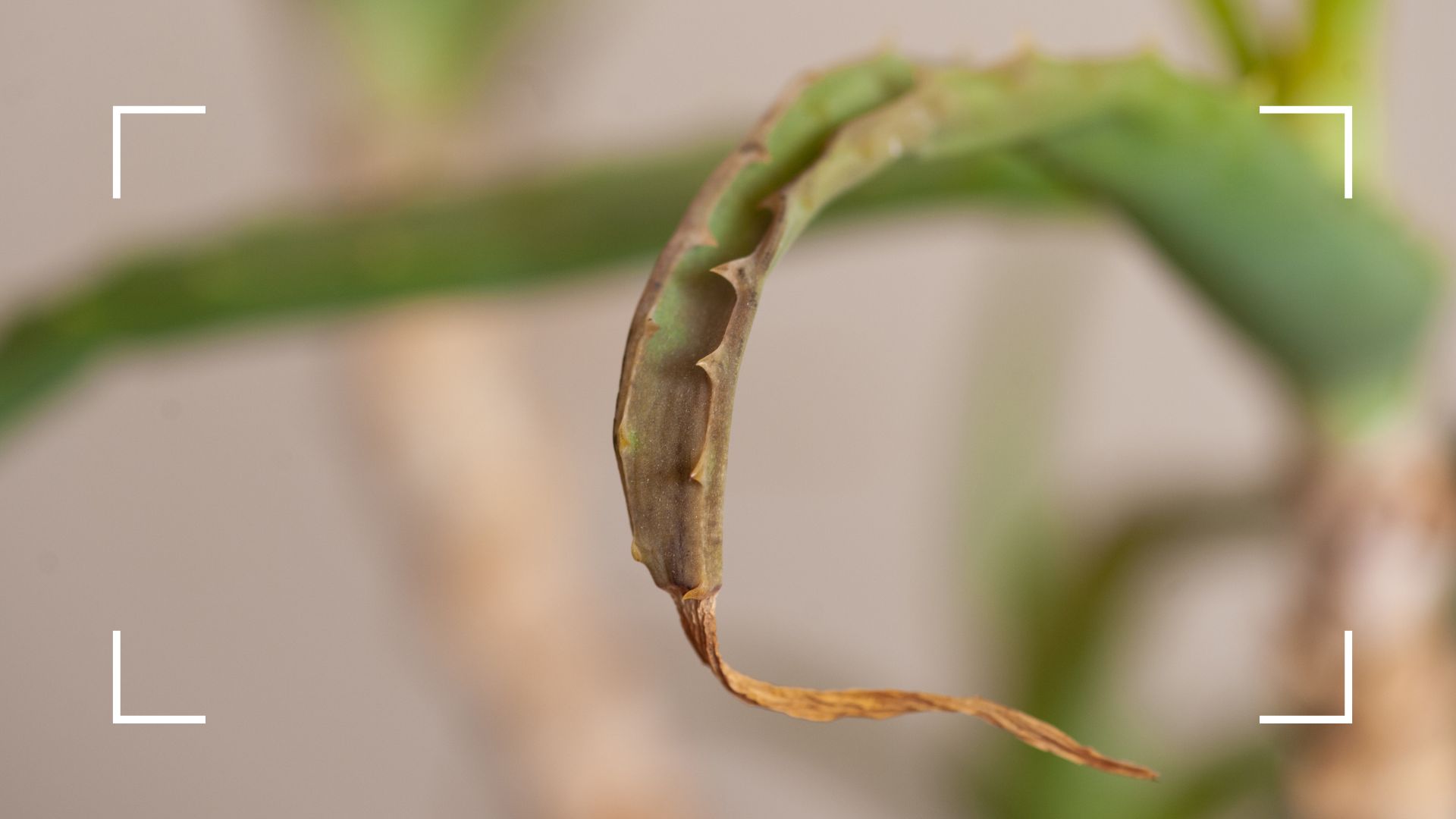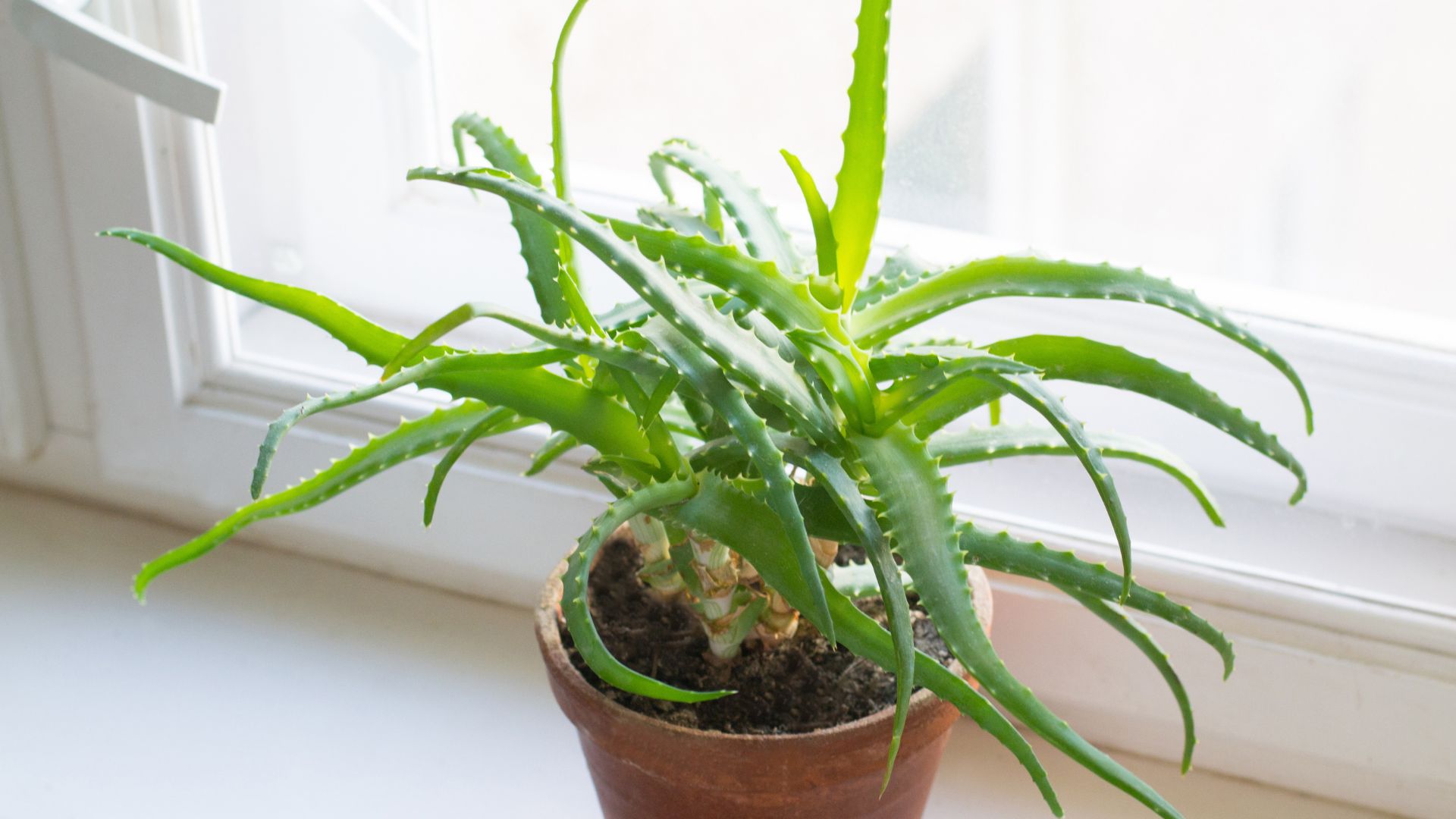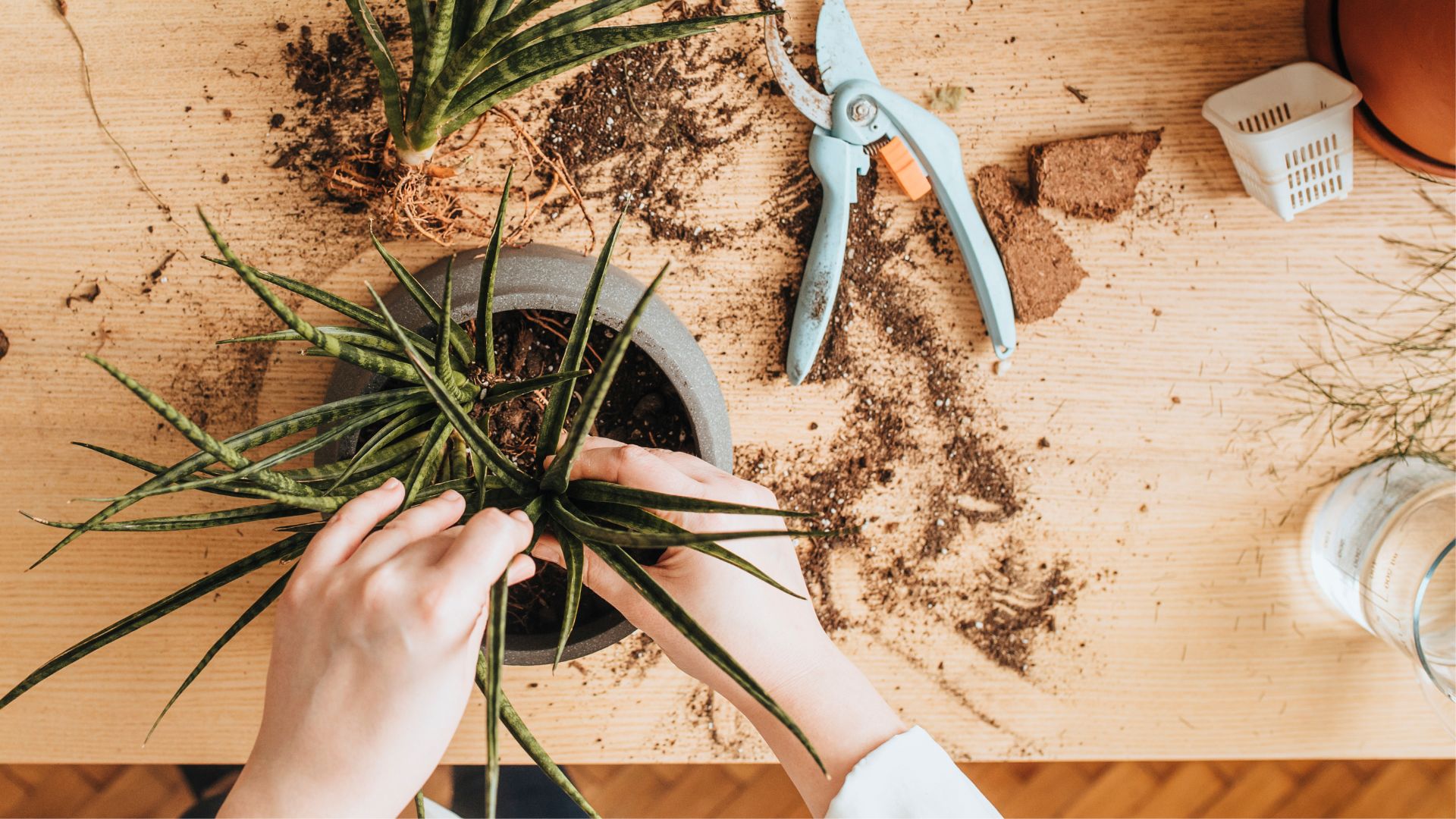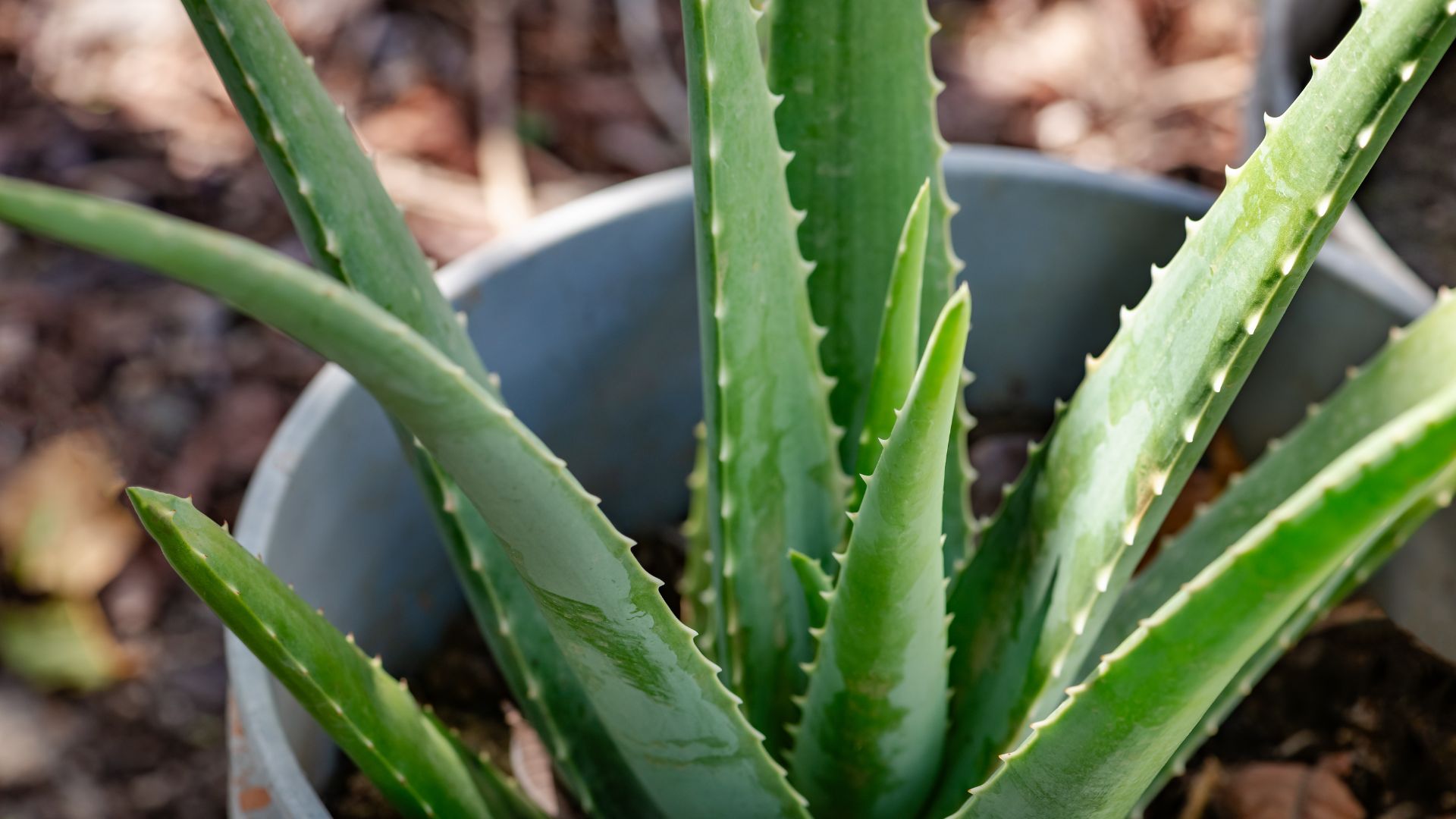
There's nothing more heartbreaking than seeing your beloved aloe vera plant start to brown and wither when you've done everything you can to keep it happy. So why does this healing plant begin browning, and can you stop it?
Whether you fancy yourself a pro at looking after indoor plants or are still learning the ropes, sometimes our leafy friend decides to give up on us for seemingly no reason at all. And whilst you may have done your best plant parenting, there are easy ways to figure out what caused your plant's untimely demise.
If you've ever had to wonder why your peace lily plant is turning brown then you might be able to work out what did it for your aloe vera. But if not, then don't fret as we asked the plant experts 'why is my aloe vera plant turning brown?' so that we could find out exactly what could cause this sad sight.
Why is my aloe vera plant turning brown?
Aloe veras are known for their moisture-rich healing gel interior, so when you see them begin to brown and wither it's a surefire sign that something is seriously wrong. In the same way, monstera leaves can turn brown, there are a few reasons that your plant is unwell and luckily there are a few ways to prevent or change it.
1. Too much sun exposure

If you ask a gardening expert 'why is my aloe vera plant turning brown?' they'll always ask you whether it's in direct sunlight. One of the most common houseplant mistakes is assuming your plant needs overwhelming amounts of sunlight. Whilst it's no secret that plants need vitamin D to live and photosynthesise, there is such a thing as too much of a good thing.
Patty Willems, plant expert at sustainable plant pot company Elho, says, "Although succulents generally love sunshine, aloe vera can start to suffer if left in full sun, especially in the warmer months. The leaf tips may start to brown from too much direct sunlight. For indoor plants, aim to give them at least six hours of sun daily, ideally in a spot with indirect light."
A great place for your plant is near a window with a mesh curtain, this way your plant still receives sunlight but isn't completely sat in it all day.
2. A badly matched watering routine
Knowing how often you should water your indoor plants is an extremely important step in plant care. You may think that underwatering your plant is one of the biggest risks, but in fact, overwatering can be just as fatal for your leafy friend too.
Graham Smith MCIhort, a gardening expert from LBS Horticulture says, "aloe vera plants are succulents, and they thrive in dry conditions. If you are overwatering the plant, this can cause the leaves to turn brown and wilt, and it may also lead to root rot."
Although aloe vera plants are drought resistant, Graham also explains that not watering them for long periods of time can also make the tips of the leaves brown as they begin to shrivel from the lack of moisture.
3. Excessive fertilisation

There's no denying that the tricks for natural fertilisers (using banana peels and coffee grounds in your garden) work wonders. However, when it comes to indoor plants, fertilising doesn't need to be such a priority.
"Aloe vera plants do not need a lot of nourishment, so over-fertilising can be detrimental to the plant and make the leaves go brown. Too much fertiliser may cause salt to accumulate around the plant's roots, blocking water absorption," explains Graham.
Similar to how often you should water a succulent, fertilising should be done sparingly and only when your aloe vera needs it.
4. Pests or diseases
Pests can be the reason your peace lily leaves turn yellow and why mould might grow on your plant's topsoil, so it's no surprise they can affect your aloe too.
Graham explains that pests such as scale or fungal infections can cause brown spots on the leaves of aloe vera. These spots will look differently to your plant simply withering and can be prevented with the use of the natural pesticide neem oil.
Using neem oil will stop any pests from wanting to find a home on your plant but it won't cause any unnecessary damage and is completely natural and safe to use around your home on other plant species.
FAQs
How can you prevent an aloe vera plant from turning brown?
Knowing how to care for an aloe vera plant properly is the only way to truly prevent any browning or withering. Being able to meet the needs of your plant and ensure it doesn't fall into despair will reduce the risk of any signs of dying.
Patty says, "Preventing browning involves finding the right balance. Make sure your aloe vera gets enough light without overexposure, water it thoroughly but let the soil dry out completely between waterings and keep it in stable temperatures. Regularly check for pests and use gentle, plant-safe products when needed."

How can you reverse the browning on an aloe vera plant?
Luckily all hope is not lost once the browning begins. There are a few things you can do to stop any further damage and help your plant make a full recovery.
"If your aloe vera does start to brown, you can often mitigate the damage by trimming the affected areas, adjusting your light exposure, and fine-tuning your watering routine. Remember, once a leaf turns brown, you won’t be able to reverse it. Instead, you’ll need to remove the leaf entirely," says Patty.
Is browning normal on an aloe vera plant?
Although browning can be quite panic-inducing, especially when it's on one of the best indoor plants for your health and well-being, it can be completely normal.
Patty explains that occasional browning of the tips and older leaves can be normal as part of the plant's natural ageing process, widespread or severe browning is typically a sign of stress and improper care. She says, "By understanding and addressing the underlying causes, you can keep your aloe vera plant healthy and vibrant!"
As one of the best plants to help with condensation in your home, aloe veras are a multi-faceted species that can offer you so many benefits. They're also a fantastic plant to keep nearby in the kitchen as their interior gel can quickly and efficiently help with cuts and burns.







